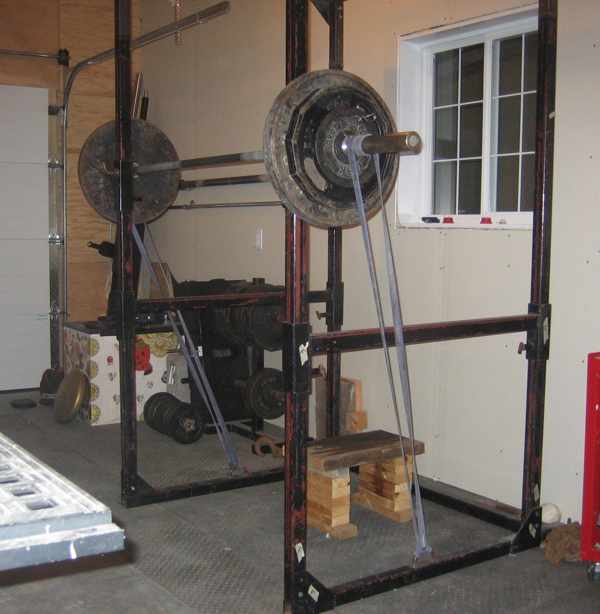Research Supports ACL Tear Prevention Programs Beginning at Age 11 for Girls
Research supports ACL tear prevention training beginning for girls at age 11. Find out more details in this post.
A recent study: Anterior cruciate ligament laxity and strength of quadriceps, hamstrings, and hip abductors in young pre-pubescent female soccer players over time: a three-year prospective longitudinal pilot study.
…whoo, long title… as I was saying, a recent study was published in Orthopedic Physical Therapy Practice that clearly demonstrates the timeframe and magnitude to which the strength balance of young females’ bodies begins to become unbalanced.
Here’s the abstract:
Purpose: This was a longitudinal study to determine the effects of maturation on anterior cruciate ligament (ACL) laxity and muscle strength in pre-pubescent female soccer players. Methods: ACL laxity and quadriceps, hamstrings, and abductors strength were measured annually from 2006 through 2008 in 22 pre-pubescent female soccer players, ages 7-12yrs. Results: ACL laxity increased 2.2 mm (p < 0.0002) in 2007 and 1.7 mm (p < 0.005) in 2008. Quadriceps strength increased 1.9 kg (p < 0.01) in 2007 and 2.1 kg (p < 0.009) in 2008. No significant change was noted in the hamstrings. Abductor strength decreased 3.0 kg (p < 0.0001) in 2007 and 2.3 kg (p < 0.0001) in 2008. Quadriceps to hamstring (Q/H) ratio decreased 0.4 kg (p < 0.02) in 2008. Conclusion: ACL laxity increased with age in pre-pubescent girls. The high Q/H ratio, and decreased abductor muscle strength, indicates an increased risk of ACL injury. Significant changes at age 11.5 occur both in ACL laxity and muscle strength, just one year prior to average age of menses. Girls may be approaching puberty with preexisting muscle weakness and imbalance that may expose them to ACL injury.
The critical pieces to pull from the abstract refer to the combined effects of a high strength ratio between the quadriceps and hamstrings (ideally, you want them to be well balanced and fairly even), the decreasing strength of the abductors (they keep the knee from "caving"), and ever increasing strength of the quadriceps.
It’s worth noting that this study was conducted on girls who are athletes, female soccer players to be exact. So, the increase in ACL laxity was not due to inactivity.
I think it is fantastic that the exact age – 11.5 years – has been pinpointed as the most significant time when this shift towards imbalance is occurring.
What should you do? Well, if you have a daughter, I’d suggest getting her started in a program that has a strong (and highly successful) ACL tear prevention protocol. Training to prevent ACL tears is serious business and, in the long run, it will cost a lot less to PREVENT a tear that to surgically repair and rehab a tear.
Which mass-gaining method is "best"?
After dragging my brain through 41 pages of research on "The Influence of Frequency, Intensity, Volume and Mode of Strength Training on Whole Muscle Cross-Sectional Area in Humans" guess what the conclusion was on an extensive study designed to figure out the best way/combination of ways to increase muscle mass? Essentially, that all variables are valuable and there is NO ONE SINGLE MAGIC BULLET.
Sometimes - okay, a lot of times - research totally cracks me up. I think I've stated this before. This paper was about 10x longer than most with extreme detail and for what... to confirm something that any experienced strength coach knows:
Regarding progression, we recommend low volumes (e.g. 1–2 sets) in the initial stages of training, when performing eccentric-muscle actions, because low volumes have been shown to be sufficient to induce hypertrophy in the early stages of training and because exercise adherence may be improved if the workout is relatively brief. Also, avoiding unnecessary damage may allow hypertrophy to take place earlier. As the individual adapts to the stimulus of strength training, the overall volume and/or intensity may have to be gradually increased to result in continued physiological adaptations and other strategies (e.g, periodisation) can also be introduced if even further progress is desired.
So, through actual published research (and not the usual anecdotal evidence), it is confirmed that the best policy when progressing an individual for anything - in this case hypertrophy - is always found in moderation.
The next time you're considering ordering any number of TV products promising to solve all your problems or thinking about signing your kid up for training that "guarantees" quick results, I ask that you keep in mind some solid research and accept that anything worthwhile in life takes time, hard work, and guidance.







